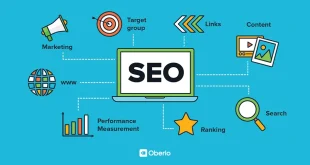Google’s algorithm updates are always a significant event in the digital marketing world. The March 2024 core and spam updates have introduced notable changes that SEO professionals must understand and adapt to. These updates aim to improve search quality and user experience, making it crucial for website owners and marketers to stay informed about the new requirements and best practices. This article explores the key changes in SEO following these updates and provides actionable insights for optimizing websites in this new landscape.
1. Introduction
Google’s search algorithm cannot be overstated. It determines how websites rank in search results, directly impacting visibility and traffic. Google’s March 2024 core and spam updates introduced several changes, focusing on content quality, user experience, and spam prevention. Understanding these changes is vital for maintaining and improving search rankings.
2. Overview of Google’s March 2024 Core Update
Google’s core updates are comprehensive changes to the search algorithm that aim to improve the relevance and quality of search results.
Emphasis on Content Quality: Google’s latest core update emphasizes high-quality, relevant content. Websites with thin or outdated content are likely to see a drop in rankings.
User Experience (UX) Factors: User experience continues to play a critical role in SEO. Factors like page load speed, mobile-friendliness, and secure connections (HTTPS) are more important than ever.
E-A-T (Expertise, Authoritativeness, Trustworthiness): E-A-T remains critical. Websites that demonstrate expertise, authoritativeness, and trustworthiness in content and structure are rewarded with higher rankings.
3. Key Changes in the March 2024 Core Update
3.1. Enhanced Content Evaluation
One of the most significant changes is how Google evaluates content. The search engine now uses more advanced natural language processing (NLP) techniques to better understand the context and quality of content.
Comprehensive: Cover topics in-depth, answering potential questions users may have.
Relevant: Align closely with the search intent of users.
Up-to-date: Regularly updated to ensure information is current.
3.2. Improved User Experience Signals
Google has refined its ability to assess user experience through various signals:
Core Web Vitals: These updated now rely more heavily in LCP, FID, and CLS to credit quality websites with better SERPs position.
Mobile Optimization: With the continued rise of mobile searches, mobile optimization is crucial. Websites must be fully responsive and provide an excellent user experience.
3.3. Strengthened E-A-T Criteria
The update has intensified the focus on E-A-T, especially for YMYL (Your Money or Your Life) websites, such as those in the health, finance, and legal sectors. To meet these criteria:
Author Credentials: While mentioning of the author it also advisable to write a summary about the expertise of the authors.
Citations and Sources: Use reputable sources and provide citations to back up claims.
Transparency: Include detailed About Us pages, contact information, and privacy policies.
4. Overview of Google’s March 2024 Spam Update
Google also rolled out a spam update to outrank spammy and low-quality content websites. This update targets various types of spam, including:
Automated Content: Using AI to generate content that lacks originality and usefulness.
5. Key Changes in the March 2024 Spam Update
5.1. Advanced Detection Mechanisms
Google has deployed more sophisticated algorithms to detect spammy practices. This includes:
AI and Machine Learning: Leveraging advanced AI and machine learning techniques to identify patterns, behaviors, and anomalies typical of spam. These technologies allow Google to continuously learn and adapt to new spam tactics.
Behavioral Analysis: Monitoring user interactions and engagement metrics to spot anomalies indicative of spam, such as sudden spikes in traffic from suspicious sources or unnatural user behaviors that deviate from normal patterns. This helps in identifying and penalizing manipulative practices effectively.
5.2. Penalties for Non-Compliant Sites
Websites found engaging in spammy practices face harsher penalties, including:
Ranking Drops: Significant decreases in search rankings, resulting in reduced visibility and traffic, which can severely impact your site’s performance and revenue.
De-indexing: Complete removal from Google’s index for severe violations, meaning your site will no longer appear in search results, effectively eliminating all organic search traffic.
Manual Actions: Direct intervention from Google’s webspam team, which can involve targeted penalties, warnings, and specific actions required to restore your site’s standing in search results.
6. Adapting to the Updates: Best Practices
To thrive in the post-update SEO landscape, consider the following best practices:
6.1. Focus on High-Quality Content
Invest in Quality: Produce well-researched, original content that provides real value to users.
Regular Updates: Keep content fresh and relevant by updating it with new information.
6.2. Enhance User Experience
Optimize for Speed: Improve page load times by optimizing images, leveraging browser caching, and using a content delivery network (CDN).
Ensure Mobile Friendliness: Use responsive design and test your site on various devices to ensure a seamless mobile experience.
6.3. Strengthen E-A-T
Show Expertise: Highlight the qualifications, credentials, and experience of your content creators to demonstrate their expertise in the subject matter. Use author bios and professional profiles.
Build Authoritativeness: Earn backlinks from reputable, high-authority sites and actively participate in industry discussions, forums, and social media to establish your site as an authoritative source.
Increase Trustworthiness: Be transparent about your business practices by providing clear contact information, privacy policies, and customer service details. Protect user data and comply with relevant regulations to build and maintain trust with your audience.
6.4. Avoid Spammy Practices
Original Content: Create unique, valuable content and avoid scraping or duplicating material from other sources. Ensure your content adds new insights and perspectives.
Ethical SEO: Follow white-hat SEO practices, focusing on long-term strategies. Avoid shortcuts like cloaking, keyword stuffing, or using automated content generators, which can lead to penalties.
7. Monitoring and Measuring Success
Adapting to these updates is a collaborative effort. Continuously monitor your website’s performance and make adjustments as needed:
Use Analytics Tools: Tools like Google Analytics and Search Console can provide insights into how your site is performing and where improvements are needed.
Stay Informed: Keep up with SEO news and updates from Google to stay ahead of future changes. Keep an eye on Domain authority and spam score volatilities. You can use any free DA PA checker to analyze these metrics.
8. Conclusion
The March 2024 core and spam updates from Google have significantly changed the SEO landscape. By focusing on high-quality content, enhancing user experience, strengthening E-A-T, and avoiding spammy practices, website owners and marketers can adapt to these changes and continue to succeed in search rankings. Staying informed and proactive is critical to thriving in the ever-evolving world of SEO.
 Daily Blogger News Stay updated with the latest trends and insights. Your reliable source for daily updates and information.
Daily Blogger News Stay updated with the latest trends and insights. Your reliable source for daily updates and information.







